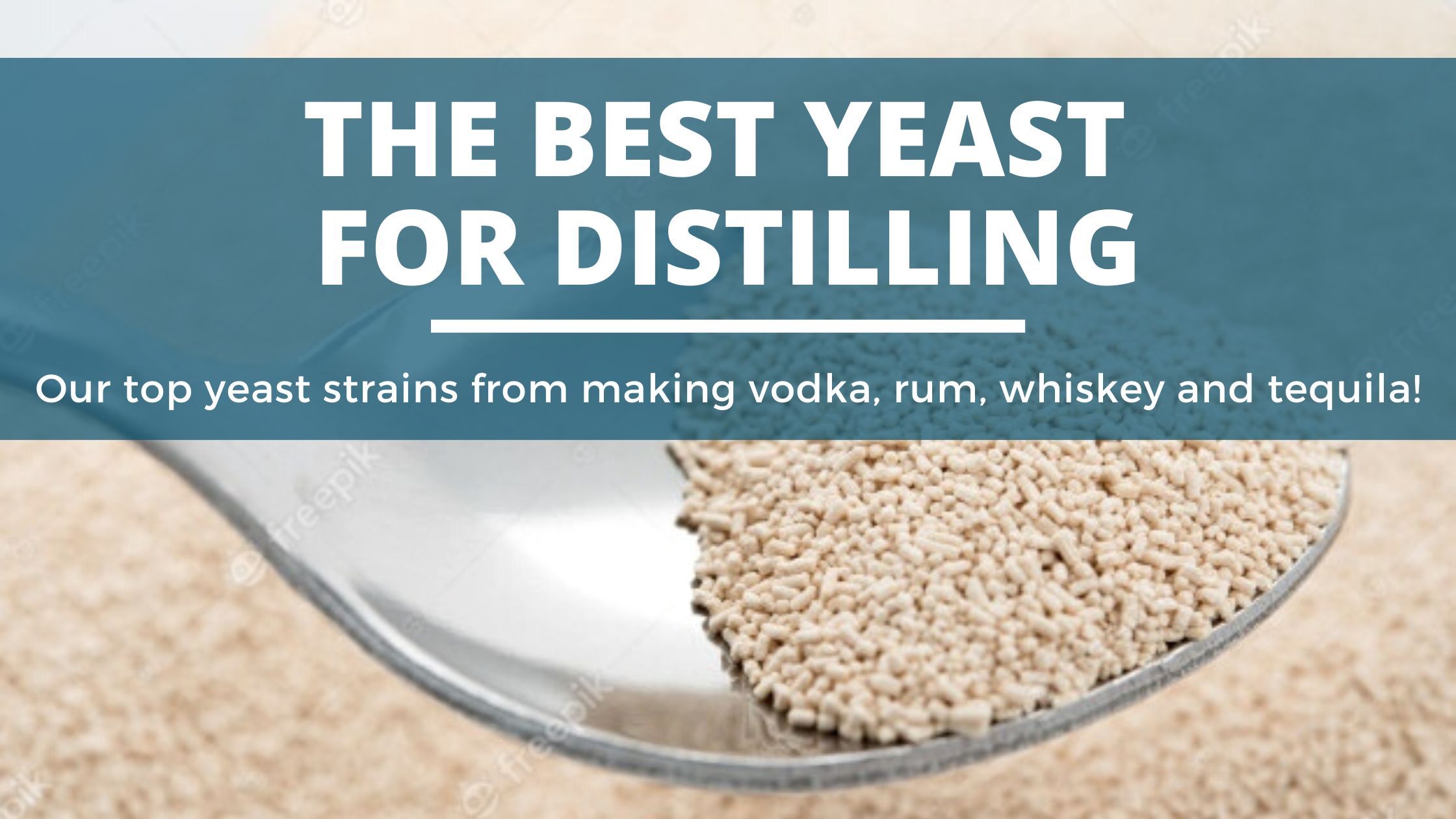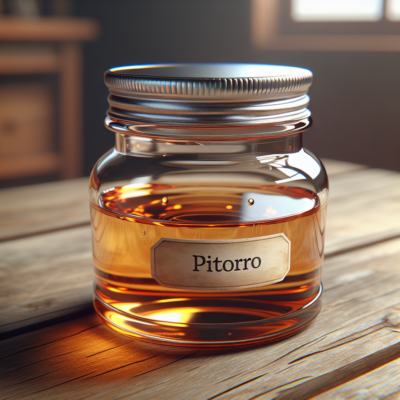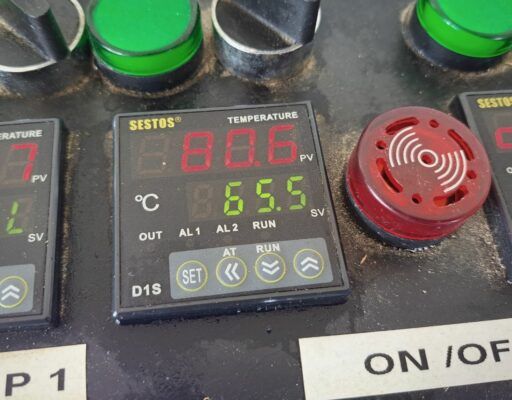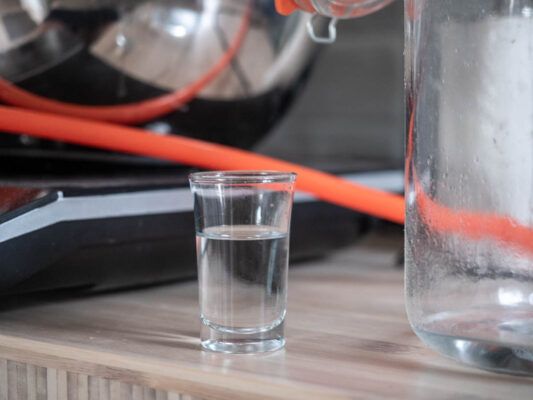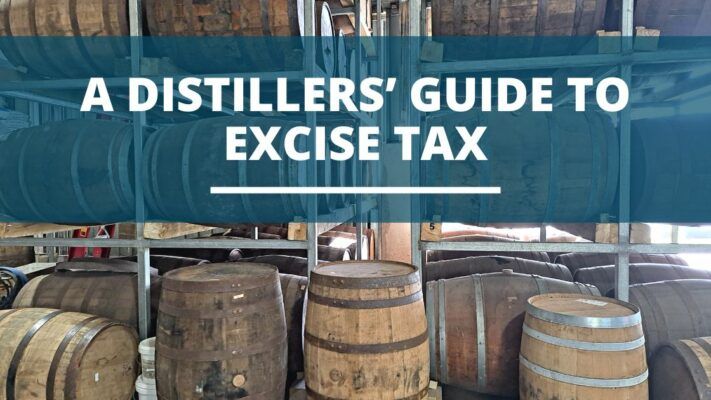Brandy and Schnapps, Distilling 101, Gin, Ingredients, Rum, Tequila, Vodka, Whiskey, Yeast
The Best Yeasts For Distilling (Our Top 4!)
There are currently over 1500 varieties of yeast available to choose from. But yeast is yeast, right? Well while they may all seem similar enough, there are plenty of differences you should be aware of.
Some yeast types perform better than others based on the ingredients you’re fermenting. Others impart unique flavors that are critical to creating an authentic beverage.
Read on as we tackle what exactly are the best yeasts for distilling.
Table of Contents
What Is the Best Yeast For Distilling:
There is no one best yeast for distilling. Each style of spirit relies on the distinct characteristics of the yeast to create the drink we know and love. For example, tequila needs a yeast capable of fermenting high fructose agave nectar, while rum needs yeast that thrives on cane sugar and produces a good amount of fruity and spicy esters.

The following are our 4 best yeasts for distilling
- Best Tequila Yeast – Distilamax TQ
- Best Rum Yeast – Distilamax RM
- Best Whiskey Yeast – Distilamax MW
- Best Vodka Yeast – SafSpirit C-70
Best Tequila Yeast
Agave syrup is difficult to ferment because it’s almost entirely fructose and contains very few nutrients for the yeast. Similar to fermenting honey, or high fructose corn syrup – agave sugars are actually harder to ferment than a basic sugar wash.
What makes a good tequila yeast?
Agave nectar is typically 80% fructose. Remember: table sugar or sucrose is 50% fructose and 50% glucose. The high concentration of fructose in agave juice has been associated with reduced ethanol tolerance of commercial yeasts used for tequila production and low fermentation yields.
Agave nectar is also nutrient-poor, and even contains compounds that are toxic to some yeast strains.
Agave washes typically perform better using fructophilic yeast. Therefore, we recommend the following yeasts when trying to make the perfect tequila or mezcal at home:
You can read more on why we chose this and our other 4 favorite tequila yeasts here.
Best Tequila Yeast: DistilaMax® TQ
DistilaMax TQ active dry yeast is a selected strain of Saccharomyces cerevisiae selected for use in the production of tequila, mezcal and fruit brandies. It displays aromatic profiles which are well-suited for tequila and mezcal such as increasing complexity and fruity characters.
Fermentis SafTeq Blue yeast: A saccharomyces cerevisiae specifically selected to ferment blue agave for the production of tequila. This will work great whether you want to ferment 1–% agave, or supplement with other sugars.
Best Rum Yeast
What makes a good rum yeast?
Rum is first and foremost about flavor, so we need to ensure that fermentation adds and enhances the right flavors in the wash. We want a yeast that results in the right phenolic compounds, aldehydes, and esters that give rum its quintessential taste, while also finding a strain capable of fully fermenting the high fructose sugar cane.
You can read more on why we chose this and our other 4 favorite rum yeasts here.
Best Rum Yeast: DistilaMax RM
This is probably the best all-round rum yeast we’ve found. It’s been designed for sugarcane rum and doesn’t pull any punches when it comes to flavor. If you are looking to buy one yeast that you can have 100% faith in, then this is the one to get.
DistilaMax® RM is recommended for the production of rum and other cane juice-based spirits. It displays intense tropical fruity aromas and complexity and was selected in a tropical region by the INRA (France) in partnership with Lallemand.
Best Vodka Yeast
Vodka is generally regarded as a neutral spirit, so we want to minimize any off-flavors in the final product.
What makes a good vodka yeast?
In addition, different yeast strains have different levels of resilience to alcohol. Vodka making is usually all about efficiency – we want to get as much ABV out of our wash as possible. Therefore, it’s important to understand that some yeasts won’t survive and fermentation will halt at higher alcohol levels.
You can read more on why we chose this and our other 3 favorite vodka yeasts here.
Best Vodka Yeast: Safspirit C-70
You can always rely on Safspirit C-70 when you’re looking for a good all-round yeast to distill your vodka, neutral, or anything where you want a clean fermentation with no funky flavors going on.
This yeast is a favorite of most distillers since it is affordable and has a multifunctional strain. That aside, this yeast is well known as the best and high-quality alcohol from all kinds of substrates available. It can reach up to 18 percent alcohol with a neutral profile of spirit.
From their website: “Robust, multipurpose strain and one of the most popular within distillers. Produces very high-quality alcohol from all kinds of substrates, with subtle congeners. Used extensively in the Caribbean and Central America for producing good quality potable alcohol and rums from sugar cane juice or molasses. Very good performance in agave juice (mezcal and tequila). A good option for low and medium gravity grain mash fermentation.”
Why do we like this yeast? Because it’s a great all-purpose strain. We like multitaskers – things that can be used for more than one application. When it comes to yeast, the Safspirit C-70 is exactly that. So, if you don’t have a bag of it already, it’d put it on top of your shopping list as a distiller staple!
- Safspirit Usw-6
- The performer yeast in all kind of grains or blends of grains
- 500 Grams
- Does not contain alcohol
Best Whiskey Yeast
Whiskey (or whisky) is all about flavor, so we need to ensure that fermentation adds and enhances the right flavors in the wash. We want a yeast that results in the right phenolic compounds, aldehydes, and esters that give whiskey its quintessential taste.
What makes a good whiskey yeast?
You can read more on why we chose this and our other 4 favorite whiskey yeasts here.
Best Whiskey Yeast: Distilamax MW
This is probably the best all-round whiskey yeast we’ve found. It’s been designed for whiskey production but doesn’t lean too far in any style direction. If you are looking to make a variety of whiskey styles, then this is the yeast for you.
DistilaMax® MW is recommended for the production of malt whiskey and has been selected for its ability to ferment maltose, maltotriose and other starch-derived saccharides present in malted barley feedstock. It produces a congener profile that will increase spirit complexity resulting in fruity and spicy notes.
It can withstand a wider temperature range between 25C and 33C. Better still, it is well known to have an alcohol tolerance of about 15%.
Let’s Talk About Yeast Nutrients
Yeast nutrients are composed of ammonium phosphate, amino acids, vitamins, and minerals in a precise ratio. Comparable to a multivitamin for yeast, it ensures that the yeast has everything necessary to ferment your beer, wine, cider, etc.
What is yeast nutrient and why should you use it?
“Yeast nutrient” is an umbrella word for the complex mixture of trace elements, minerals, and vitamins that are vital for the growth and function of yeast cells but cannot be synthesized by the cells themselves – these compounds must be provided by the environment. Copper, magnesium, phosphate, and zinc, to mention a few, are necessary for the optimal metabolism of cells.
Insufficiencies in the availability of these nutrients might result in subpar fermentation and undesirable quantities of congeners (especially sulfur compounds).
Barley malt or entire fruits that have been gathered in an excellent growing season will provide enough nutrients to ensure a successful fermentation. It is, however, possible that yeast cells may suffer during fermentation in a mash that does not contain malt or fruit; or if the intrinsic micronutrients of malt or fruit are depleted by a considerable portion of unmalted grains or simple sugars. A poor crop’s malt or fruit will also have less nutritional value than ideal.
You can read more on the best yeast nutrient for brewing and distilling here
Our Favorit Yeast Nutrient: Fermaid k
Fermaid K is a yeast nutrient that may be used for both starters and primary fermentation.
Fermaid K contains several active compounds including:
- Ammonia salts (DAP)
- Alpha-amino nitrogen, sterols
- Unsaturated fatty acids
- Inactive yeast cells
- Key micronutrients
- Magnesium sulfate
- Thiamin
- Folic acid
- Niacin
- Biotin
- Calcium pantothenate
Usage: 1 gram per gallon.
- Complex yeast nutrient
Conclusion:
There you have it! Our top 4 yeast strains based on what you’re distilling.
- Best Tequila Yeast – Distilamax TQ
- Best Rum Yeast – Distilamax RM
- Best Whiskey Yeast – Distilamax MW
- Best Vodka Yeast – SafSpirit C-70
- Best Yeast Nutrient – Fermaid k

